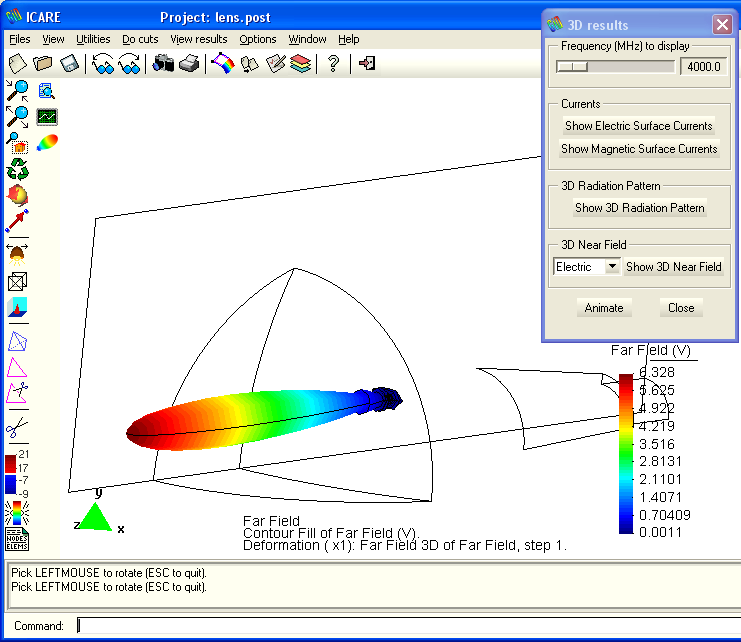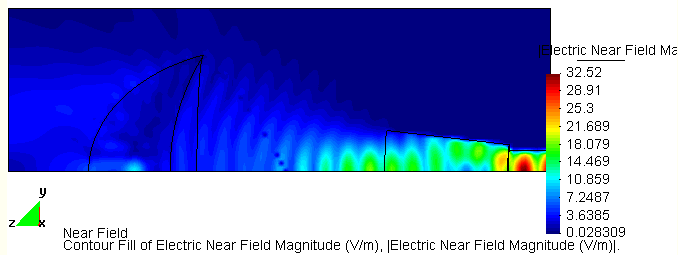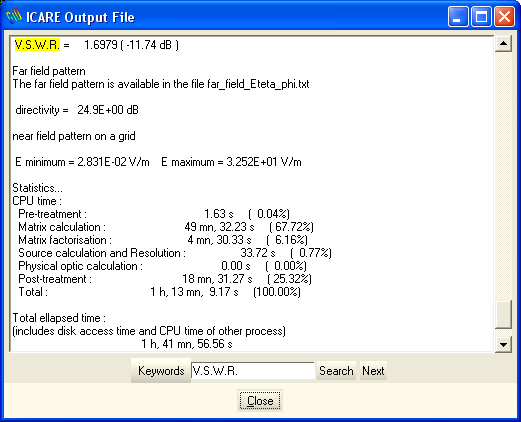
The circular horn from the previous example is used to illuminate a dielectric lens. Re open the previous example and same it with a new name in order to keep the same geometry and the same electromagnetic data.
The lens has a spherical surface facing the horn and an elliptic surface on the other side.

the ellipse equation is:

where n is the refractive index of the dielectric lens
The circle's radius (F) is 40 cm, the lens's thickness (h) is 15 cm and n = ![]() .
.
View of the quarter of the geometry :

Create another medium (or reuse an existing one if possible)

Create a new interface :
and assign it to the lens :

Set a finer radiation pattern output since it should be more directive :

Set a larger near field grid to include the lens. However, since the near field computation may be time consuming if there are too much points, only one half of the cut plane is considered :

Generate the mesh, save and run.
The far field pattern (3D view) :

Electric surface currents:

Magnetic surface currents (only on the dielectric parts) :

The electric near field shows how the lens focalizes the radiation of the horn :

It is possible to check that the maximum value of the directivity is improved. The drawback of the lens is that the return loss (VSWR) is increased :

Copyright © 2015, IEEA